TRADERS’ TIPS
October 2016
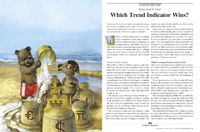
For this month’s Traders’ Tips, the focus is Markos Katsanos’ article
in this issue, “Which Trend Indicator Wins?” Here, we present
the October 2016 Traders’ Tips code with possible implementations in
various software.
The Traders’ Tips section is provided to help the reader implement
a selected technique from an article in this issue or another recent issue.
The entries here are contributed by software developers or programmers for
software that is capable of customization.

TRADESTATION: OCTOBER 2016
In “Which Trend Indicator Wins?” in this issue, author Markos
Katsanos compares the effectiveness of four popular trend-detection indicators.
He tests the ADX, R-squared, vertical horizontal filter (VHF), and efficiency
ratio (ER). He includes some TradeStation EasyLanguage code for the strategies
in his article.
TradeStation offers a number of advanced tools and capabilities to assist
traders with strategy backtesting and optimization. The TradeStation Walk-Forward
Optimizer (WFO) is an advanced strategy optimization tool that automates the
complex, multistep task of carrying out the statistical walk-forward testing
of a trading strategy’s optimized inputs. TradeStation Portfolio Maestro
is a backtesting tool that lets you evaluate the performance of a group of
strategies applied to one or more symbols that make up your portfolio. As shown
in Figure 1, Portfolio Maestro allows the user to analyze the performance of
all of the author’s strategies simultaneously.

FIGURE 1: TRADESTATION PORTFOLIO MAESTRO. Here are sample
TradeStation Portfolio Maestro results for each of the author’s four
strategies applied to USO using a daily interval.
To download the EasyLanguage code for the author’s strategies as well
as an example Portfolio Maestro configuration export, please visit our TradeStation
and EasyLanguage support forum. It can be found here: https://community.tradestation.com/Discussions/Topic.aspx?Topic_ID=142776.
The ELD filename is “TASC_OCT2016.ELD.”
For more information about EasyLanguage in general, please see https://www.tradestation.com/EL-FAQ.
This article is for informational purposes. No type of trading or investment
recommendation, advice, or strategy is being made, given, or in any manner
provided by TradeStation Securities or its affiliates.
—Doug McCrary
TradeStation Securities, Inc.
www.TradeStation.com
BACK TO LIST

METASTOCK: OCTOBER 2016
Markos Katsanos’ article in this issue, “Which Trend Indicator
Wins,” presents formulas for four different indicators designed to identify
trending markets. The MetaStock formulas for the four indicators are listed
below.
ADX
This indicator is built into MetaStock. It can be used with the formula function:
ADX( periods )
For example, to use a 14-period ADX, you would write:
ADX( 14 )
The formulas for the ADX trend system are:
Buy:
( (Cross(ADX(14), 30) AND ADX(14) < 42) OR
(Cross(ADX(14), 22) AND ADX(14) > 1.8*LLV(ADX(14), 12) ) )
AND C > Mov(C, 50, S)
Sell:
Cross( Mov(C, 50, S), C )
Sell short:
( (Cross(ADX(14), 30) AND ADX(14) < 42) OR
(Cross(ADX(14), 22) AND ADX(14) > 1.8*LLV(ADX(14), 12) ) )
AND C < Mov(C, 50, S)
Buy to cover:
Cross( C, Mov(C, 50, S) )
Vertical horizontal filter (VHF)
This indicator is built into MetaStock. It can be used with the formula function:
VHF( data array, periods )
For example, to use a 14-period VHF on the close, you would write:
VHF( C, 14 )
The formulas for the VHF trend system are:
Buy:
( (Cross(VHF(C, 36), .38) AND VHF(C, 36) < .45 AND
VHF(C, 36) > Ref(VHF(C, 36),-10)) OR
(Cross(VHF(C, 36), .24) AND VHF(C, 36) > 1.5*LLV(VHF(C, 36), 10) ) )
AND C > Mov(C, 50, S)
Sell:
Cross( Mov(C, 50, S), C )
Sell short:
( (Cross(VHF(C, 36), .38) AND VHF(C, 36) < .45 AND
VHF(C, 36) > Ref(VHF(C, 36),-10)) OR
(Cross(VHF(C, 36), .24) AND VHF(C, 36) > 1.5*LLV(VHF(C, 36), 10) ) )
AND C < Mov(C, 50, S)
Buy to cover:
Cross( C, Mov(C, 50, S) )
Efficiency ratio (ER)
Perry Kaufman’s efficiency ratio can be added to MetaStock with the
following formula:
tp:= 10; {time periods}
Abs( ROC( C, tp, $) ) / Sum( Abs( ROC( C, 1, $) ), tp)
As written, it is for a 10-period efficiency ratio. If you wish to use a different
number of periods, just change the number on the first line.
The formulas for the efficiency ratio trend system are:
Buy:
er := Mov( Abs( ROC( C, 24, $) ) / Sum( Abs( ROC( C, 1, $) ), 24), 3, S);
( (Cross( er, .36) AND er < .42 AND er > Ref(er, -3)) OR
(Cross(er, .26) AND er > 2.5*LLV(er, 3) ) )
AND C > Mov(C, 50, S)
Sell:
Cross( Mov(C, 50, S), C )
Sell short:
er := Mov( Abs( ROC( C, 24, $) ) / Sum( Abs( ROC( C, 1, $) ), 24), 3, S);
( (Cross( er, .36) AND er < .42 AND er > Ref(er, -3)) OR
(Cross(er, .26) AND er > 2.5*LLV(er, 3) ) )
AND C < Mov(C, 50, S)
Buy to cover:
Cross( C, Mov(C, 50, S) )
R-squared
This indicator is built into MetaStock. It can be used with the formula function:
RSquared( data array, periods )
For example, to use a 21-period R-squared calculated on the close, you would
write:
RSquared( C, 21 )
The formulas for the R-squared trend system are:
Buy:
r2 := RSquared(C, 18);
lr := LinRegSlope( C, 18 ) * 100;
Cross( r2, .42) AND r2 < .85 AND r2 > Ref(r2, -10) AND
C > Mov(C, 50, S) AND lr > 10
Sell:
Cross( Mov(C, 50, S), C )
Sell short:
r2 := RSquared(C, 18);
lr := LinRegSlope( C, 18 ) * 100;
Cross( r2, .42) AND r2 < .85 AND r2 > Ref(r2, -10) AND
AND C < Mov(C, 50, S) AND lr < -10
Buy to cover:
Cross( C, Mov(C, 50, S) )
—William Golson
MetaStock Technical Support
www.metastock.com
BACK TO LIST

eSIGNAL: OCTOBER 2016
For this month’s Traders’ Tip, we’ve provided the ADX.efs (average
directional index), ER.efs (efficiency
ratio), R2.efs (R-squared)
and VHF.efs (vertical
horizontal filter) studies based on the formulas described Markos Katsanos’ article
in this issue, “Which Trend Indicator Wins?” In his article, the
author compares four indicators to see which one performs the best at identifying
trends.
The studies contain formula parameters that may be configured through the edit
chart window (right-click on the chart and select “edit chart”).
A sample chart is shown in Figure 2.
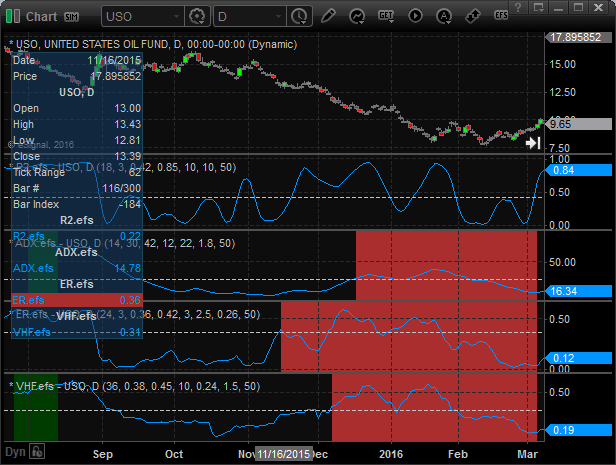
FIGURE 2: eSIGNAL. The four studies are plotted on a
daily chart of USO.
To discuss this study or download a complete copy of the formula code, please
visit the EFS library discussion board forum under the forums link
from the support menu at www.esignal.com or
visit our EFS KnowledgeBase at www.esignal.com/support/kb/efs/.
The code is also available as a zipped archive here:
ADX.efs
/*********************************
Provided By:
eSignal (Copyright c eSignal), a division of Interactive Data
Corporation. 2016. All rights reserved. This sample eSignal
Formula Script (EFS) is for educational purposes only and may be
modified and saved under a new file name. eSignal is not responsible
for the functionality once modified. eSignal reserves the right
to modify and overwrite this EFS file with each new release.
Description:
Which Trend Indicator Wins? by Markos Katsanos
Version: 1.00 08/10/2016
Formula Parameters: Default:
Length 14
Trend 30
Max ADX 42
Lag 12
Crit 22
Mult 1.8
MA Length 50
Notes:
The related article is copyrighted material. If you are not a subscriber
of Stocks & Commodities, please visit www.traders.com.
**********************************/
var fpArray = new Array();
function preMain(){
setPriceStudy(false);
setDefaultBarFgColor(Color.RGB(0,148,255),0);
var x=0;
fpArray[x] = new FunctionParameter("Length", FunctionParameter.NUMBER);
with(fpArray[x++]){
setLowerLimit(1);
setUpperLimit(1000);
setDefault(14);
setName("Length");
}
fpArray[x] = new FunctionParameter("Trend", FunctionParameter.NUMBER);
with(fpArray[x++]){
setLowerLimit(0);
setUpperLimit(100);
setDefault(30);
setName("Trend");
}
fpArray[x] = new FunctionParameter("AdxMax", FunctionParameter.NUMBER);
with(fpArray[x++]){
setLowerLimit(0);
setUpperLimit(100);
setDefault(42);
setName("Max ADX");
}
fpArray[x] = new FunctionParameter("Lag", FunctionParameter.NUMBER);
with(fpArray[x++]){
setLowerLimit(1);
setUpperLimit(1000);
setDefault(12);
setName("Lag");
}
fpArray[x] = new FunctionParameter("Crit", FunctionParameter.NUMBER);
with(fpArray[x++]){
setLowerLimit(1);
setUpperLimit(100);
setDefault(22);
setName("Crit");
}
fpArray[x] = new FunctionParameter("Mult", FunctionParameter.NUMBER);
with(fpArray[x++]){
setLowerLimit(0.01);
setUpperLimit(100);
setDefault(1.8);
setName("Mult");
}
fpArray[x] = new FunctionParameter("MALength", FunctionParameter.NUMBER);
with(fpArray[x++]){
setLowerLimit(1);
setUpperLimit(1000);
setDefault(50);
setName("MA Length");
}
}
var bInit = false;
var bVersion = null;
var xClose = null;
var xADX = null;
var xSMA = null;
var xLADX = null;
function main(Length, Trend, AdxMax, Lag, Crit, Mult, MALength){
if (bVersion == null) bVersion = verify();
if (bVersion == false) return;
if (getCurrentBarCount() <= Length) return;
if (getBarState() == BARSTATE_ALLBARS){
xClose = null;
xADX = null;
xSMA = null;
xLADX = null;
bInit = false;
}
if (!bInit){
xClose = close();
xADX = adx(Length,Length);
xLADX = lowerDonchian(Lag, xADX);
xSMA = sma(MALength, xClose);
addBand(Trend, PS_DASH, 1, Color.RGB(195,195,195),1);
bInit = true;
}
var nADX = xADX.getValue(0);
if (getCurrentBarIndex() != 0){
var nSMA = xSMA.getValue(0);
var nSMA_1 = xSMA.getValue(-1);
var nADX_1 = xADX.getValue(-1);
var nClose = xClose.getValue(0);
var nClose_1 = xClose.getValue(-1);
var nLADX = xLADX.getValue(0);
if (Strategy.isLong() && nClose_1 > nSMA_1 && nClose < nSMA)
Strategy.doSell("MA", Strategy.MARKET, Strategy.NEXTBAR, Strategy.DEFAULT);
else if (Strategy.isShort() && nClose_1 < nSMA_1 && nClose > nSMA)
Strategy.doCover("XMA", Strategy.MARKET, Strategy.NEXTBAR, Strategy.DEFAULT);
if (!Strategy.isInTrade()){
if (nADX_1 < Trend && nADX > Trend && nADX < AdxMax){
if (nClose > nSMA)
Strategy.doLong("STRONGTREND", Strategy.MARKET, Strategy.NEXTBAR, Strategy.DEFAULT);
else if (nClose < nSMA)
Strategy.doShort("STRONGDOWNTREND", Strategy.MARKET, Strategy.NEXTBAR, Strategy.DEFAULT);
}
else if (nADX > (Mult * nLADX) && nADX_1 < Crit && nADX > Crit){
if (nClose > nSMA)
Strategy.doLong("TREND", Strategy.MARKET, Strategy.NEXTBAR, Strategy.DEFAULT);
else if (nClose < nSMA)
Strategy.doShort("DOWNTREND", Strategy.MARKET, Strategy.NEXTBAR, Strategy.DEFAULT);
}
}
if (Strategy.isLong()) setBarBgColor(Color.RGB(0,60,0));
else if (Strategy.isShort()) setBarBgColor(Color.RGB(170,46,46))
}
return xADX.getValue(0);
}
function verify(){
var b = false;
if (getBuildNumber() < 779){
drawTextAbsolute(5, 35, "This study requires version 10.6 or later.",
Color.white, Color.blue, Text.RELATIVETOBOTTOM|Text.RELATIVETOLEFT|Text.BOLD|Text.LEFT,
null, 13, "error");
drawTextAbsolute(5, 20, "Click HERE to upgrade.@URL=https://www.esignal.com/download/default.asp",
Color.white, Color.blue, Text.RELATIVETOBOTTOM|Text.RELATIVETOLEFT|Text.BOLD|Text.LEFT,
null, 13, "upgrade");
return b;
}
else
b = true;
return b;
}
ER.efs
/*********************************
Provided By:
eSignal (Copyright c eSignal), a division of Interactive Data
Corporation. 2016. All rights reserved. This sample eSignal
Formula Script (EFS) is for educational purposes only and may be
modified and saved under a new file name. eSignal is not responsible
for the functionality once modified. eSignal reserves the right
to modify and overwrite this EFS file with each new release.
Description:
Which Trend Indicator Wins? by Markos Katsanos
Version: 1.00 08/10/2016
Formula Parameters: Default:
Length 24
ER Smooth 3
Trend 0.36
Max ER 0.42
Lag 3
Mult 2.5
Crit 0.26
MA Length 50
Notes:
The related article is copyrighted material. If you are not a subscriber
of Stocks & Commodities, please visit www.traders.com.
**********************************/
var fpArray = new Array();
function preMain(){
setPriceStudy(false);
setDefaultBarFgColor(Color.RGB(0,148,255),0);
var x=0;
fpArray[x] = new FunctionParameter("Length", FunctionParameter.NUMBER);
with(fpArray[x++]){
setLowerLimit(1);
setUpperLimit(1000);
setDefault(24);
setName("Length");
}
fpArray[x] = new FunctionParameter("Smooth", FunctionParameter.NUMBER);
with(fpArray[x++]){
setLowerLimit(1);
setUpperLimit(1000);
setDefault(3);
setName("ER Smooth");
}
fpArray[x] = new FunctionParameter("Trend", FunctionParameter.NUMBER);
with(fpArray[x++]){
setLowerLimit(0);
setUpperLimit(1);
setDefault(0.36);
setName("Trend");
}
fpArray[x] = new FunctionParameter("ERMax", FunctionParameter.NUMBER);
with(fpArray[x++]){
setLowerLimit(0);
setUpperLimit(1);
setDefault(0.42);
setName("Max ER");
}
fpArray[x] = new FunctionParameter("Lag", FunctionParameter.NUMBER);
with(fpArray[x++]){
setLowerLimit(1);
setUpperLimit(1000);
setDefault(3);
setName("Lag");
}
fpArray[x] = new FunctionParameter("Mult", FunctionParameter.NUMBER);
with(fpArray[x++]){
setLowerLimit(0.01);
setUpperLimit(100);
setDefault(2.5);
setName("Mult");
}
fpArray[x] = new FunctionParameter("Crit", FunctionParameter.NUMBER);
with(fpArray[x++]){
setLowerLimit(0);
setUpperLimit(1);
setDefault(0.26);
setName("Crit");
}
fpArray[x] = new FunctionParameter("MALength", FunctionParameter.NUMBER);
with(fpArray[x++]){
setLowerLimit(1);
setUpperLimit(1000);
setDefault(50);
setName("MA Length");
}
}
var bInit = false;
var bVersion = null;
var xClose = null;
var xER = null;
var xSMA = null;
var xLER = null;
function main(Length, Smooth, Trend, ERMax, Lag, Mult, Crit, MALength){
if (bVersion == null) bVersion = verify();
if (bVersion == false) return;
if (getCurrentBarCount() <= (Length + Smooth + Lag)) return;
if (getBarState() == BARSTATE_ALLBARS){
xClose = null;
xER = null;
xSMA = null;
xLER = null;
bInit = false;
}
if (!bInit){
xClose = close();
xER = efsInternal("calc_ER",xClose,Length);
xER = sma(Smooth, xER);
xLER = lowerDonchian(Lag, xER);
xSMA = sma(MALength, xClose);
addBand(Trend, PS_DASH, 1, Color.RGB(195,195,195),1);
bInit = true;
}
var nER = xER.getValue(0);
if (getCurrentBarIndex() != 0){
var nER_1 = xER.getValue(-1);
var nER_lag = xER.getValue(-Lag);
var nLER = xLER.getValue(0);
var nSMA = xSMA.getValue(0);
var nSMA_1 = xSMA.getValue(-1);
var nClose = xClose.getValue(0);
var nClose_1 = xClose.getValue(-1);
if (Strategy.isLong() && nClose_1 > nSMA_1 && nClose < nSMA)
Strategy.doSell("MA", Strategy.MARKET, Strategy.NEXTBAR, Strategy.DEFAULT);
else if (Strategy.isShort() && nClose_1 < nSMA_1 && nClose > nSMA)
Strategy.doCover("XMA", Strategy.MARKET, Strategy.NEXTBAR, Strategy.DEFAULT);
if (!Strategy.isInTrade()){
if (nER_1 < Trend && nER > Trend && nER < ERMax && nER > nER_lag){
if (nClose > nSMA)
Strategy.doLong("STRONGTREND", Strategy.MARKET, Strategy.NEXTBAR, Strategy.DEFAULT);
else if (nClose < nSMA)
Strategy.doShort("STRONGDOWNTREND", Strategy.MARKET, Strategy.NEXTBAR, Strategy.DEFAULT);
}
else if (nER > (Mult * nLER) && nER_1 < Crit && nER > Crit){
if (nClose > nSMA)
Strategy.doLong("TREND", Strategy.MARKET, Strategy.NEXTBAR, Strategy.DEFAULT);
else if (nClose > nSMA)
Strategy.doShort("DOWNTREND", Strategy.MARKET, Strategy.NEXTBAR, Strategy.DEFAULT);
}
}
if (Strategy.isLong()) setBarBgColor(Color.RGB(0,60,0));
else if (Strategy.isShort()) setBarBgColor(Color.RGB(170,46,46));
}
return nER;
}
function calc_ER(Close,Length){
var nNetCh = Math.abs(Close.getValue(0) - Close.getValue(-Length));
var nSum = 0;
for (var i = 0; i < Length; i++){
nSum += Math.abs(Close.getValue(-i) - Close.getValue(-i-1));
}
if (nSum == 0) return;
ER = nNetCh / nSum;
return ER;
}
function verify(){
var b = false;
if (getBuildNumber() < 779){
drawTextAbsolute(5, 35, "This study requires version 10.6 or later.",
Color.white, Color.blue, Text.RELATIVETOBOTTOM|Text.RELATIVETOLEFT|Text.BOLD|Text.LEFT,
null, 13, "error");
drawTextAbsolute(5, 20, "Click HERE to upgrade.@URL=https://www.esignal.com/download/default.asp",
Color.white, Color.blue, Text.RELATIVETOBOTTOM|Text.RELATIVETOLEFT|Text.BOLD|Text.LEFT,
null, 13, "upgrade");
return b;
}
else
b = true;
return b;
}
R2.efs
/*********************************
Provided By:
eSignal (Copyright c eSignal), a division of Interactive Data
Corporation. 2016. All rights reserved. This sample eSignal
Formula Script (EFS) is for educational purposes only and may be
modified and saved under a new file name. eSignal is not responsible
for the functionality once modified. eSignal reserves the right
to modify and overwrite this EFS file with each new release.
Description:
Which Trend Indicator Wins? by Markos Katsanos
Version: 1.00 08/10/2016
Formula Parameters: Default:
Length 18
R2 Smooth 3
Trend 0.42
Max R2 0.85
Lag 10
LR Crit 10
MA Length 50
Notes:
The related article is copyrighted material. If you are not a subscriber
of Stocks & Commodities, please visit www.traders.com.
**********************************/
var fpArray = new Array();
function preMain(){
setPriceStudy(false);
setDefaultBarFgColor(Color.RGB(0,148,255),0);
var x=0;
fpArray[x] = new FunctionParameter("Length", FunctionParameter.NUMBER);
with(fpArray[x++]){
setLowerLimit(1);
setUpperLimit(1000);
setDefault(18);
setName("Length");
}
fpArray[x] = new FunctionParameter("Smooth", FunctionParameter.NUMBER);
with(fpArray[x++]){
setLowerLimit(1);
setUpperLimit(1000);
setDefault(3);
setName("R2 Smooth");
}
fpArray[x] = new FunctionParameter("Trend", FunctionParameter.NUMBER);
with(fpArray[x++]){
setLowerLimit(0);
setUpperLimit(1);
setDefault(0.42);
setName("Trend");
}
fpArray[x] = new FunctionParameter("R2Max", FunctionParameter.NUMBER);
with(fpArray[x++]){
setLowerLimit(0);
setUpperLimit(1);
setDefault(0.85);
setName("Max R2");
}
fpArray[x] = new FunctionParameter("Lag", FunctionParameter.NUMBER);
with(fpArray[x++]){
setLowerLimit(1);
setUpperLimit(1000);
setDefault(10);
setName("Lag");
}
fpArray[x] = new FunctionParameter("LRcrit", FunctionParameter.NUMBER);
with(fpArray[x++]){
setLowerLimit(1);
setUpperLimit(1000);
setDefault(10);
setName("LR Crit");
}
fpArray[x] = new FunctionParameter("MALength", FunctionParameter.NUMBER);
with(fpArray[x++]){
setLowerLimit(1);
setUpperLimit(1000);
setDefault(50);
setName("MA Length");
}
}
var bInit = false;
var bVersion = null;
var xClose = null;
var xR2Lin = null;
var xSlope = null;
var xR2 = null;
var xSMA = null;
function main(Length, Smooth, Trend, R2Max, Lag, LRcrit, MALength){
if (bVersion == null) bVersion = verify();
if (bVersion == false) return;
if (getCurrentBarCount() <= (Length + Smooth + Lag)) return;
if (getBarState() == BARSTATE_ALLBARS){
xClose = null;
xR2Lin = null;
xSlope = null;
xR2 = null;
xSMA = null;
bInit = false;
}
if (!bInit){
xClose = close();
xR2Lin = efsInternal("calc_R2", xClose, Length);
if (xR2Lin.getValue(0) != null){
xSlope = getSeries(xR2Lin, 0);
xR2 = getSeries(xR2Lin,1);
}
xR2 = sma(Smooth, xR2);
xSMA = sma(MALength, xClose);
addBand(Trend, PS_DASH, 1, Color.RGB(195,195,195),0);
bInit = true;
}
var nSlope = xSlope.getValue(0) * 100;
var nR2 = xR2.getValue(0);
if (getCurrentBarIndex() != 0){
nR2_1 = xR2.getValue(-1);
nR2_lag = xR2.getValue(-Lag);
nClose = xClose.getValue(0);
nClose_1 = xClose.getValue(-1);
nSMA = xSMA.getValue(0);
nSMA_1 = xSMA.getValue(-1);
if (Strategy.isLong() && nClose_1 > nSMA_1 && nClose < nSMA)
Strategy.doSell("MA", Strategy.MARKET, Strategy.NEXTBAR, Strategy.DEFAULT);
else if (Strategy.isShort() && nClose_1 < nSMA_1 && nClose > nSMA)
Strategy.doCover("XMA", Strategy.MARKET, Strategy.NEXTBAR, Strategy.DEFAULT);
if ((!Strategy.isInTrade()) && nR2_1 < Trend && nR2 >= Trend && nR2 < R2Max && nR2 > nR2_lag){
if (nClose > nSMA && nSlope > LRcrit)
Strategy.doLong("STRONGTREND", Strategy.MARKET, Strategy.NEXTBAR, Strategy.DEFAULT);
else if (nClose < nSMA && nSlope <= LRcrit)
Strategy.doShort("STRONGDOWNTREND", Strategy.MARKET, Strategy.NEXTBAR, Strategy.DEFAULT);
}
if (Strategy.isLong()) setBarBgColor(Color.RGB(0,60,0));
else if (Strategy.isShort()) setBarBgColor(Color.RGB(170,46,46));
}
return nR2;
}
function calc_R2(xClose, Length){
var X = 0, Y = 0, XY = 0, X2 = 0, Y2 = 0;
for (var i = 0; i < Length; i++){
var xVal = xClose.getValue(-i);
X += (i + 1);
Y += xVal;
XY += ((i + 1) * xVal);
X2 += ((i + 1) * (i + 1));
Y2 += (xVal * xVal);
}
var xAvg = X / Length;
var yAvg = Y / Length;
var aSum1 = 0, aSum2 = 0;
for (var i = 0; i < Length; i++){
aSum1 += (i-xAvg) * (xClose.getValue(-i)-yAvg);
aSum2 += (i-xAvg) * (i-xAvg);
}
var nSlope = aSum1 / aSum2;
var R2 = Math.pow((Length * XY - X * Y) / Math.sqrt((Length * X2 - X * X) * (Length * Y2 - Y*Y)),2);
return new Array(nSlope, R2);
}
function verify(){
var b = false;
if (getBuildNumber() < 779){
drawTextAbsolute(5, 35, "This study requires version 10.6 or later.",
Color.white, Color.blue, Text.RELATIVETOBOTTOM|Text.RELATIVETOLEFT|Text.BOLD|Text.LEFT,
null, 13, "error");
drawTextAbsolute(5, 20, "Click HERE to upgrade.@URL=https://www.esignal.com/download/default.asp",
Color.white, Color.blue, Text.RELATIVETOBOTTOM|Text.RELATIVETOLEFT|Text.BOLD|Text.LEFT,
null, 13, "upgrade");
return b;
}
else
b = true;
return b;
}
VHF.efs
/*********************************
Provided By:
eSignal (Copyright c eSignal), a division of Interactive Data
Corporation. 2016. All rights reserved. This sample eSignal
Formula Script (EFS) is for educational purposes only and may be
modified and saved under a new file name. eSignal is not responsible
for the functionality once modified. eSignal reserves the right
to modify and overwrite this EFS file with each new release.
Description:
Which Trend Indicator Wins? by Markos Katsanos
Version: 1.00 08/10/2016
Formula Parameters: Default:
Length 14
Trend 30
Max VHF 42
Lag 12
Crit 22
Mult 1.8
MA Length 50
Notes:
The related article is copyrighted material. If you are not a subscriber
of Stocks & Commodities, please visit www.traders.com.
**********************************/
var fpArray = new Array();
function preMain(){
setPriceStudy(false);
setDefaultBarFgColor(Color.RGB(0,148,255),0);
var x=0;
fpArray[x] = new FunctionParameter("Length", FunctionParameter.NUMBER);
with(fpArray[x++]){
setLowerLimit(1);
setUpperLimit(1000);
setDefault(36);
setName("Length");
}
fpArray[x] = new FunctionParameter("Trend", FunctionParameter.NUMBER);
with(fpArray[x++]){
setLowerLimit(0);
setUpperLimit(1);
setDefault(0.38);
setName("Trend");
}
fpArray[x] = new FunctionParameter("VHFMax", FunctionParameter.NUMBER);
with(fpArray[x++]){
setLowerLimit(0);
setUpperLimit(1);
setDefault(0.45);
setName("Max VHF");
}
fpArray[x] = new FunctionParameter("Lag", FunctionParameter.NUMBER);
with(fpArray[x++]){
setLowerLimit(1);
setUpperLimit(1000);
setDefault(10);
setName("Lag");
}
fpArray[x] = new FunctionParameter("Crit", FunctionParameter.NUMBER);
with(fpArray[x++]){
setLowerLimit(1);
setUpperLimit(1);
setDefault(0.24);
setName("Crit");
}
fpArray[x] = new FunctionParameter("Mult", FunctionParameter.NUMBER);
with(fpArray[x++]){
setLowerLimit(0.01);
setUpperLimit(100);
setDefault(1.5);
setName("Mult");
}
fpArray[x] = new FunctionParameter("MALength", FunctionParameter.NUMBER);
with(fpArray[x++]){
setLowerLimit(1);
setUpperLimit(1000);
setDefault(50);
setName("MA Length");
}
}
var bInit = false;
var bVersion = null;
var xClose = null;
var xVHF = null;
var xSMA = null;
var xLVHF = null;
function main(Length, Trend, VHFMax, Lag, Crit, Mult, MALength){
if (bVersion == null) bVersion = verify();
if (bVersion == false) return;
if (getCurrentBarCount() <= Length) return;
if (getBarState() == BARSTATE_ALLBARS){
xClose = null;
xVHF = null;
xSMA = null;
xLVHF = null;
xHighest = null;
xLowest = null;
bInit = false;
}
if (!bInit){
xClose = close();
xVHF = efsInternal("calc_VHF",xClose,Length);
xLVHF = lowerDonchian(Lag, xVHF);
xSMA = sma(MALength, xClose);
addBand(0.35, PS_DASH, 1, Color.RGB(195,195,195),1);
bInit = true;
}
nVHF = xVHF.getValue(0);
if (getCurrentBarIndex() != 0){
var nSMA = xSMA.getValue(0);
var nSMA_1 = xSMA.getValue(-1);
var nVHF_1 = xVHF.getValue(-1);
var nVHF_lag = xVHF.getValue(-Lag);
var nClose = xClose.getValue(0);
var nClose_1 = xClose.getValue(-1);
var nLVHF = xLVHF.getValue(0);
if (Strategy.isLong() && nClose_1 > nSMA_1 && nClose < nSMA)
Strategy.doSell("MA", Strategy.MARKET, Strategy.NEXTBAR, Strategy.DEFAULT);
else if (Strategy.isShort() && nClose_1 < nSMA_1 && nClose > nSMA)
Strategy.doCover("XMA", Strategy.MARKET, Strategy.NEXTBAR, Strategy.DEFAULT);
if (!Strategy.isInTrade()){
if (nVHF_1 < Trend && nVHF > Trend && nVHF < VHFMax && nVHF > nVHF_lag){
if (nClose > nSMA)
Strategy.doLong("STRONGTREND", Strategy.MARKET, Strategy.NEXTBAR, Strategy.DEFAULT);
else if (nClose < nSMA)
Strategy.doShort("STRONGDOWNTREND", Strategy.MARKET, Strategy.NEXTBAR, Strategy.DEFAULT);
}
else if (nVHF > (Mult * nLVHF) && nVHF_1 < Crit && nVHF > Crit){
if (nClose > nSMA)
Strategy.doLong("TREND", Strategy.MARKET, Strategy.NEXTBAR, Strategy.DEFAULT);
else if (nClose < nSMA)
Strategy.doShort("DOWNTREND", Strategy.MARKET, Strategy.NEXTBAR, Strategy.DEFAULT);
}
}
if (Strategy.isLong()) setBarBgColor(Color.RGB(0,60,0));
else if (Strategy.isShort()) setBarBgColor(Color.RGB(170,46,46))
}
return nVHF;
}
var xHighest = null;
var xLowest = null;
function calc_VHF(Close,Length){
if (getBarState() == BARSTATE_ALLBARS){
xHighest = upperDonchian(Length,Close);
xLowest = lowerDonchian(Length,Close);
}
var nHighest = xHighest.getValue(0);
var nLowest = xLowest.getValue(0);
if (nHighest == null || nLowest == null) return;
var nSum = 0;
for (var i = 0; i < Length; i++){
nSum += Math.abs(Close.getValue(-i) - Close.getValue(-i-1));
}
if (nSum == 0) return;
VHF = (nHighest - nLowest) / nSum;
return VHF;
}
function verify(){
var b = false;
if (getBuildNumber() < 779){
drawTextAbsolute(5, 35, "This study requires version 10.6 or later.",
Color.white, Color.blue, Text.RELATIVETOBOTTOM|Text.RELATIVETOLEFT|Text.BOLD|Text.LEFT,
null, 13, "error");
drawTextAbsolute(5, 20, "Click HERE to upgrade.@URL=https://www.esignal.com/download/default.asp",
Color.white, Color.blue, Text.RELATIVETOBOTTOM|Text.RELATIVETOLEFT|Text.BOLD|Text.LEFT,
null, 13, "upgrade");
return b;
}
else
b = true;
return b;
}
—Eric Lippert
eSignal, an Interactive Data company
800 779-6555, www.eSignal.com
BACK TO LIST

WEALTHLAB: OCTOBER 2016
In “Which Trend Indicator Wins?” in this issue, author Markos
Katsanos discusses four indicators for detecting trends. Here, we’ll
present a framework that lets a Wealth-Lab user run any of the four example
systems for testing the efficiency of these indicators. By dragging the respective
parameter slider on the bottom left of the screen, one of the included subsystems
(ADX, R2, VHF or ER) can be executed, or they can be executed all together
(Figure 3).
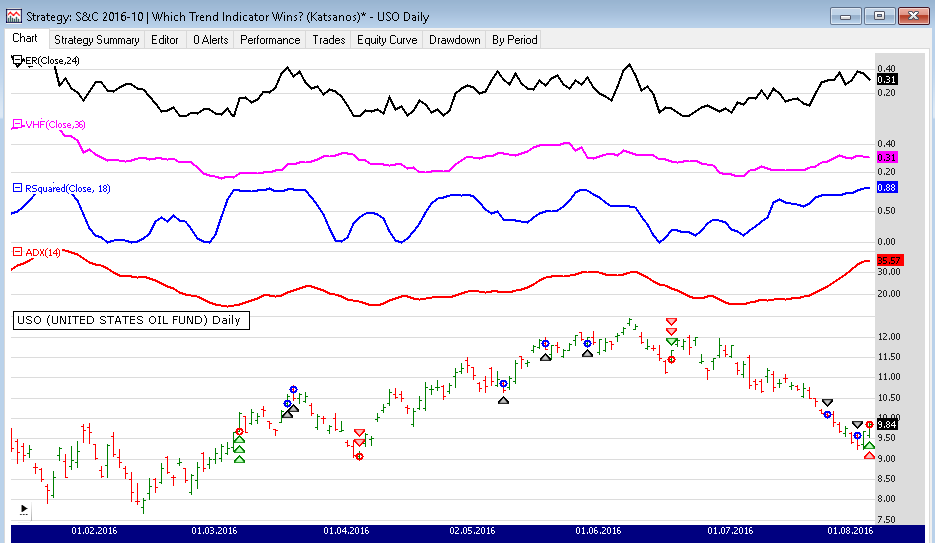
FIGURE 3: WEALTH-LAB. This illustrates example trades
taken by all four trading systems at the same time on a daily chart of USO
(US Oil ETF).
While most of the indicators discussed by Katsanos in the article are prepackaged,
one of the participating indicators, the efficiency ratio, has been included
in our Community Indicators library. This library can be installed additionally
from our website’s extensions section.
using System;
using System.Collections.Generic;
using System.Text;
using System.Drawing;
using WealthLab;
using WealthLab.Indicators;
using Community.Indicators;
namespace WealthLab.Strategies
{
public class TASC201610Katsanos : WealthScript
{
private StrategyParameter paramStrategy2Run;
public TASC201610Katsanos()
{
paramStrategy2Run = CreateParameter("ADX/R2/VHF/ER/All",4,0,4,1);
}
protected override void Execute()
{
var whichStrategyToRun = paramStrategy2Run.ValueInt;
HideVolume();
switch (whichStrategyToRun)
{
case 0: SystemADX.Run(this); break;
case 1: SystemR2.Run(this); break;
case 2: SystemVHF.Run(this); break;
case 3: SystemER.Run(this); break;
case 4: SystemADX.Run(this); SystemR2.Run(this); SystemVHF.Run(this); SystemER.Run(this); break;
default:
break;
}
}
}
class SystemADX
{
public static void Run(WealthScript obj)
{
int periodADX = 14, adxTrend = 30, adxMax = 42, mab = 50, crit = 22, adxLag = 12;
double adxMult = 1.8;
var c = obj.Close;
var adx = ADX.Series(obj.Bars,periodADX);
var avgMAB = SMA.Series(c,mab);
var adxLow = Lowest.Series(adx,adxLag);
ChartPane p = obj.CreatePane(30,true,true);
obj.PlotSeries(p, adx, Color.Red, LineStyle.Solid, 2 );
for(int bar = obj.GetTradingLoopStartBar(1); bar < obj.Bars.Count; bar++)
{
if (obj.IsLastPositionActive)
{
if( obj.CrossUnder(bar, c, avgMAB) || obj.CrossOver(bar, c, avgMAB) )
obj.ExitAtMarket( bar+1, obj.LastPosition, "MA" );
}
else
{
if( obj.CrossOver(bar, adx, adxTrend) && adx[bar] < adxMax & c[bar] > avgMAB[bar] )
obj.BuyAtMarket(bar+1,"Strong Trend");
if( adx[bar] > adxMult * adxLow[bar] && obj.CrossOver(bar, adx, crit) & c[bar] > avgMAB[bar] )
obj.BuyAtMarket(bar+1,"Trend");
if( obj.CrossOver(bar, adx, adxTrend) && adx[bar] < adxMax & c[bar] < avgMAB[bar] )
obj.ShortAtMarket(bar+1,"Strong Dntrend");
if( adx[bar] > adxMult * adxLow[bar] && obj.CrossOver(bar, adx, crit) & c[bar] < avgMAB[bar] )
obj.ShortAtMarket(bar+1,"Downtrend");
}
// Workaround to prevent open positions from one system to be available for the next system to close
if( bar == obj.Bars.Count-1 )
obj.ExitAtClose( bar, Position.AllPositions, "Close All" );
}
}
}
class SystemR2
{
public static void Run(WealthScript obj)
{
int periodR2 = 18, smooth = 3, mab = 50, crit = 10, r2Lag = 10;
double Trend = 0.42, r2Max = 0.85;
var c = obj.Close;
var r2 = RSquared.Series( c,periodR2 );
var lr = 100 * LinearRegSlope.Series( c,periodR2 );
var avgMAB = SMA.Series(c,mab);
ChartPane p = obj.CreatePane(30,true,true);
obj.PlotSeries(p, r2, Color.Blue, LineStyle.Solid, 2 );
for(int bar = obj.GetTradingLoopStartBar(1 + smooth + r2Lag); bar < obj.Bars.Count; bar++)
{
if (obj.IsLastPositionActive)
{
if( obj.CrossUnder(bar, c, avgMAB) || obj.CrossOver(bar, c, avgMAB) )
obj.ExitAtMarket( bar+1, obj.LastPosition, "MA" );
}
else
{
if( obj.CrossOver(bar,r2,Trend) && r2[bar] < r2Max && r2[bar] > r2[bar-r2Lag] )
{
if( c[bar] > avgMAB[bar] && lr[bar] > crit )
obj.BuyAtMarket(bar+1,"Strong Trend");
else
if( c[bar] < avgMAB[bar] && lr[bar] < -crit )
obj.ShortAtMarket(bar+1,"Strong Downtrend");
}
}
// Workaround to prevent open positions from one system to be available for the next system to close
if( bar == obj.Bars.Count-1 )
obj.ExitAtClose( bar, Position.AllPositions, "Close All" );
}
}
}
class SystemVHF
{
public static void Run(WealthScript obj)
{
int periodVHF = 36, mab = 50, vhfLag = 10;
double vhfTrend = 0.38, vhfMax = 0.45, vhfMult = 1.5, crit = 0.24;
var c = obj.Close;
var vhf = VHF.Series(c,periodVHF);
var avgMAB = SMA.Series(c,mab);
var vhfLow = Lowest.Series(vhf,vhfLag);
ChartPane p = obj.CreatePane(30,true,true);
obj.PlotSeries(p, vhf, Color.Magenta, LineStyle.Solid, 2 );
for(int bar = obj.GetTradingLoopStartBar(1 + mab + vhfLag); bar < obj.Bars.Count; bar++)
{
if (obj.IsLastPositionActive)
{
if( obj.CrossUnder(bar, c, avgMAB) || obj.CrossOver(bar, c, avgMAB) )
obj.ExitAtMarket( bar+1, obj.LastPosition, "MA" );
}
else
{
if( obj.CrossOver(bar, vhf, vhfTrend) && vhf[bar] < vhfMax & vhf[bar] > vhf[bar-vhfLag] & c[bar] > avgMAB[bar] )
obj.BuyAtMarket(bar+1,"Strong Trend");
if( vhf[bar] > vhfMult * vhfLow[bar] && obj.CrossOver(bar, vhf, crit) & c[bar] > avgMAB[bar] )
obj.BuyAtMarket(bar+1,"Trend");
if( obj.CrossOver(bar, vhf, vhfTrend) && vhf[bar] < vhfMax & vhf[bar] > vhf[bar-vhfLag] & c[bar] < avgMAB[bar] )
obj.ShortAtMarket(bar+1,"Strong Dntrend");
if( vhf[bar] > vhfMult * vhfLow[bar] && obj.CrossOver(bar, vhf, crit) & c[bar] < avgMAB[bar] )
obj.ShortAtMarket(bar+1,"Downtrend");
}
// Workaround to prevent open positions from one system to be available for the next system to close
if( bar == obj.Bars.Count-1 )
obj.ExitAtClose( bar, Position.AllPositions, "Close All" );
}
}
}
class SystemER
{
public static void Run(WealthScript obj)
{
int periodER = 24, mab = 50, erLag = 3;
double erTrend = 0.36, erMax = 0.42, erMult = 2.5, crit = 0.26;
var c = obj.Close;
var er = ER.Series(c,periodER);
var avgMAB = SMA.Series(c,mab);
var erLow = Lowest.Series(er,erLag);
ChartPane p = obj.CreatePane(30,true,true);
obj.PlotSeries(p, er, Color.Black, LineStyle.Solid, 2 );
for(int bar = obj.GetTradingLoopStartBar(1 + mab + erLag); bar < obj.Bars.Count; bar++)
{
if (obj.IsLastPositionActive)
{
if( obj.CrossUnder(bar, c, avgMAB) || obj.CrossOver(bar, c, avgMAB) )
obj.ExitAtMarket( bar+1, obj.LastPosition, "MA" );
}
else
{
if( obj.CrossOver(bar, er, erTrend) && er[bar] < erMax & er[bar] > er[bar-erLag] & c[bar] > avgMAB[bar] )
obj.BuyAtMarket(bar+1,"Strong Trend");
if( er[bar] > erMult * erLow[bar] && obj.CrossOver(bar, er, crit) & c[bar] > avgMAB[bar] )
obj.BuyAtMarket(bar+1,"Trend");
if( obj.CrossOver(bar, er, erTrend) && er[bar] < erMax & er[bar] > er[bar-erLag] & c[bar] < avgMAB[bar] )
obj.ShortAtMarket(bar+1,"Strong Dntrend");
if( er[bar] > erMult * erLow[bar] && obj.CrossOver(bar, er, crit) & c[bar] < avgMAB[bar] )
obj.ShortAtMarket(bar+1,"Downtrend");
}
// Workaround to prevent open positions from one system to be available for the next system to close
if( bar == obj.Bars.Count-1 )
obj.ExitAtClose( bar, Position.AllPositions, "Close All" );
}
}
}
}
—Eugene, Wealth-Lab team
www.wealth-lab.com
BACK TO LIST

AMIBROKER: OCTOBER 2016
In “Which Trend Indicator Wins?” author Markos Katsanos shows
how various trend strength indicators (the ADX, R-squared, VHF, and ER) can
be combined with a simple moving average crossover (Figure 4). A ready-to-use
formula implementing the indicators and systems presented in Katsanos’ article
is shown below. You can use the parameters
window to select the system/indicator you would like to test and/or display.
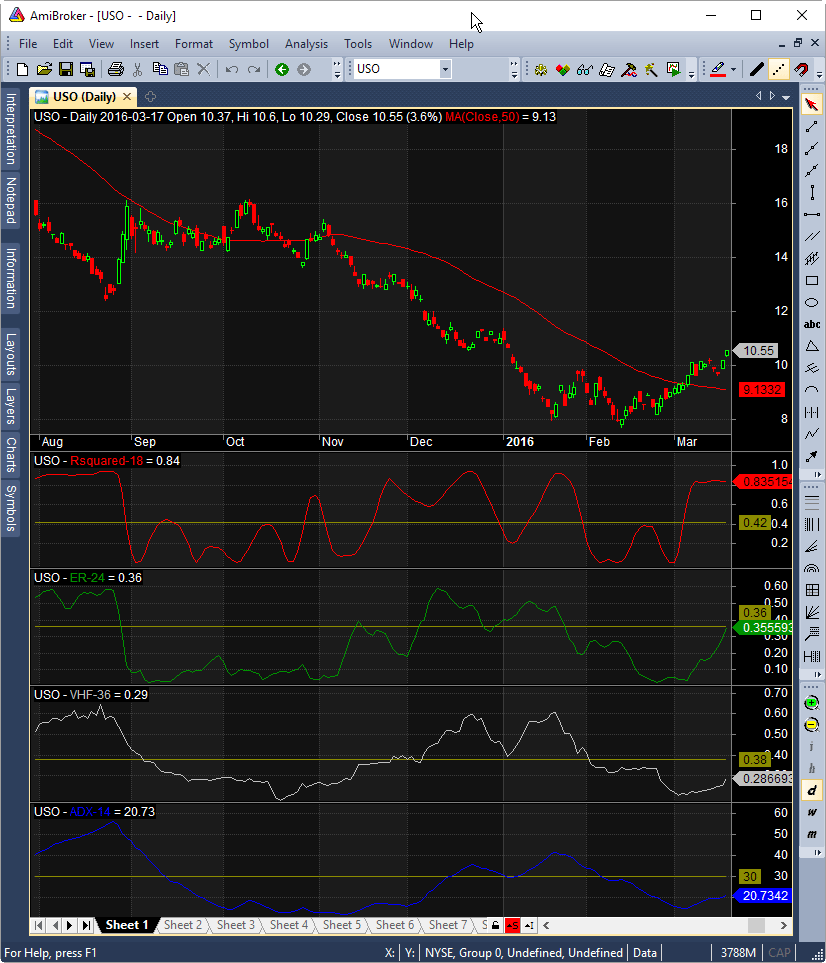
FIGURE 4: AMIBROKER. Here’s an example USO chart
with a 50-day moving average. The R-squared, the efficiency ratio (ER), the
vertical horizontal filter (VHF), and the ADX are shown in the lower panes.
function RSquared( array, period, smooth )
{
bi = BarIndex();
r = Correlation( bi, array, period);
rs = MA( r, smooth );
return rs ^ 2;
}
function VHF( period )
{
nom = HHV( High, period ) - LLV( Low, period );
denom = Sum( abs( C - Ref( C, -1 ) ), period );
return nom / denom;
}
function EffRatio( period, smooth )
{
nom = abs( C - Ref( C, -period ) );
denom = Sum( abs( C - Ref( C, -1 ) ), period );
return MA( nom/denom, smooth );
}
SetOption("ReverseSignalForcesExit", False );
procedure SystemADX()
{
global Buy, Sell, Short, Cover;
period = 14;
trend = 30;
axmax = 42;
lag = 12;
crit = 22;
mult = 1.8;
maperiod = 50;
ax = ADX( period );
mac = MA( Close, maperiod );
strongbuy = Cross( ax, trend ) AND ax < axmax AND C > mac;
regbuy = ax > mult * LLV( ax, lag ) AND Cross( ax, crit ) AND C > mac;
Buy = strongbuy OR regbuy;
strongshort = Cross( ax, trend ) AND ax < axmax AND C < mac;
regshort = ax > mult * LLV( ax, lag ) AND Cross( ax, crit ) AND C < mac;
Short = strongshort OR regshort;
Sell = Cross( mac, C );
Cover = Cross( C, mac );
Plot( ax, "ADX-" + period, colorBlue );
Plot( trend, "", colorDarkYellow);
}
procedure SystemR2()
{
global Buy, Sell, Short, Cover;
r2len = 18;
smooth = 3;
trend = 0.42;
r2max = 0.85;
lag = 10;
lrcrit = 10;
maperiod = 50;
R2 = RSquared( C, r2len, smooth );
lr = 100 * LinRegSlope( C, r2len );
flt = Cross( R2, trend ) AND R2 < R2max AND R2 > Ref( R2, -lag );
mac = MA( C, maperiod );
Buy = flt AND C > mac AND lr > lrcrit;
Short = flt AND C < mac AND lr < -lrcrit;
Sell = Cross( mac, C );
Cover = Cross( C, mac );
Plot( R2, "Rsquared-" + r2len, colorRed );
Plot( trend, "", colorDarkYellow);
}
procedure SystemVHF()
{
global Buy, Sell, Short, Cover;
period = 36;
trend = 0.38;
lag = 10;
mult = 1.5;
maperiod = 50;
crit = 0.24;
vfmax = 0.45;
vf = VHF( period );
mac = MA( C, maperiod );
strongbuy = Cross( vf, trend ) AND vf < vfmax AND vf > Ref( vf, -lag )
AND C > mac;
regbuy = vf > mult * LLV( vf, lag ) AND Cross( vf, crit ) AND C > mac;
Buy = strongbuy OR regbuy;
strongshort = Cross( vf, trend ) AND vf < vfmax AND vf > Ref( vf, -lag )
AND C < mac;
regshort = vf > mult * LLV( vf, lag ) AND Cross( vf, crit ) AND C < mac;
Short = strongshort OR regshort;
Sell = Cross( mac, C );
Cover = Cross( C, mac );
Plot( vf, "VHF-" + period, colorDefault );
Plot( trend, "", colorDarkYellow);
}
procedure SystemER()
{
global Buy, Sell, Short, Cover;
period = 24;
smooth = 3;
trend = 0.36;
ermax = 0.42;
erlag = 3;
mult = 2.5;
crit = 0.26;
maperiod = 50;
er = EffRatio( period, smooth );
mac = MA( C, maperiod );
strongbuy = Cross( er, trend ) AND er < ermax AND
er > Ref( er, -erlag ) AND C > mac;
regbuy = er > mult * LLV( er, erlag ) AND Cross( er, crit ) AND
C > mac;
Buy = strongbuy OR regbuy;
strongshort = Cross( er, trend ) AND er < ermax AND
er > Ref( er, -erlag ) AND C < mac;
regshort = er > mult * LLV( er, erlag ) AND Cross( er, crit ) AND
C < mac;
Short = strongshort OR regshort;
Sell = Cross( mac, C );
Cover = Cross( C, mac );
Plot( er, "ER-" + period, colorGreen );
Plot( trend, "", colorDarkYellow);
}
sys = ParamList("Select the system", "ADX|RSquared|VHF|ER" );
switch( sys )
{
case "ADX":
SystemADX();
break;
case "RSquared":
SystemR2();
break;
case "VHF":
SystemVHF();
break;
case "ER":
SystemER();
break;
default:
Error("Undefined system");
break;
}
—Tomasz Janeczko, AmiBroker.com
www.amibroker.com
BACK TO LIST

NEUROSHELL TRADER: OCTOBER 2016
The trend indicators described in Markos Katsanos’ article in this issue, “Which
Trend Indicator Wins?” can be easily implemented in NeuroShell Trader
with a few of NeuroShell Trader’s 800+ indicators. Simply select new
indicator from the insert menu and use the indicator wizard to
set up the following indicators:
ADX: ADX(High,Low,Close,14,14)
VHF: Divide(Range(Close,28),CumAbsMom(Close,28,1))
ER: Divide(Abs(Momentum(Close,28)),CumAbsMom(Close,28,1))
R2: LinTimeReg rsqrd(Close,21)
To implement the trend-following system for any of the indicators, simply
select “new trading strategy” from the insert menu and enter the
following in the appropriate locations of the Trading Strategy Wizard, substituting
the appropriate test parameters for each indicator as outlined in the article’s
test results:
BUY LONG CONDITIONS: [1 of which must be true]
And3(CrossAbove(Indicator,TREND),A<B(Indicator,INDMAX),A>B(Close,Avg(Close,MAB)))
And3(A>B(Indicator,Mul2(MULT,Min(Indicator,LAG))),CrossAbove(Indicator,CRIT),A>B(Close,Avg(Close,MAB)))
SELL LONG CONDITIONS:
CrossBelow(Close,Avg(Close,MAB))
SELL SHORT CONDITIONS: [1 of which must be true]
And3(CrossAbove(Indicator,TREND),A<B(Indicator,INDMAX),A<B(Close,Avg(Close,MAB)))
And3(A>B(Indicator,Mul2(MULT,Min(Indicator,LAG))),CrossAbove(Indicator,CRIT),A<B(Close,Avg(Close,MAB)))
COVER SHORT CONDITIONS:
CrossAbove(Close,Avg(Close,MAB))
Users of NeuroShell Trader can go to the Stocks & Commodities section
of the NeuroShell Trader free technical support website to download a copy
of this or any previous Traders’ Tips. A sample NeuroShell chart is shown
in Figure 5.

FIGURE 5: NEUROSHELL TRADER. This sample NeuroShell Trader
chart shows the VHF trend-following system and the four trend-following indicators.
—Marge Sherald, Ward Systems Group, Inc.
301 662-7950, sales@wardsystems.com
www.neuroshell.com
BACK TO LIST

NINJATRADER: OCTOBER 2016
Strategies based off of the ADX, R-squared, VHF, and ER indicators, as discussed
in “Which Trend Indicator Wins?” by Markos Katsanos in this issue,
are available for download at www.ninjatrader.com/SC/October2016SC.zip.
Once downloaded, from within the NinjaTrader Control Center window, select
the menu File → Utilities → Import NinjaScript and select the downloaded
file. This file is for NinjaTrader version 7.
You can review the source code of the custom VHF and ER indicators by
selecting the menu Tools → Edit NinjaScript → Indicator from within
the NinjaTrader Control Center window and selecting the VHF or ER file.
You can review the source code of the strategies by selecting the
menu Tools → Edit NinjaScript → Strategy from within the NinjaTrader
Control Center window and selecting the ADXStrategy, ERStrategy, R2Strategy,
or VHFStrategy file.
A sample chart implementing the strategy is shown in Figure 6.
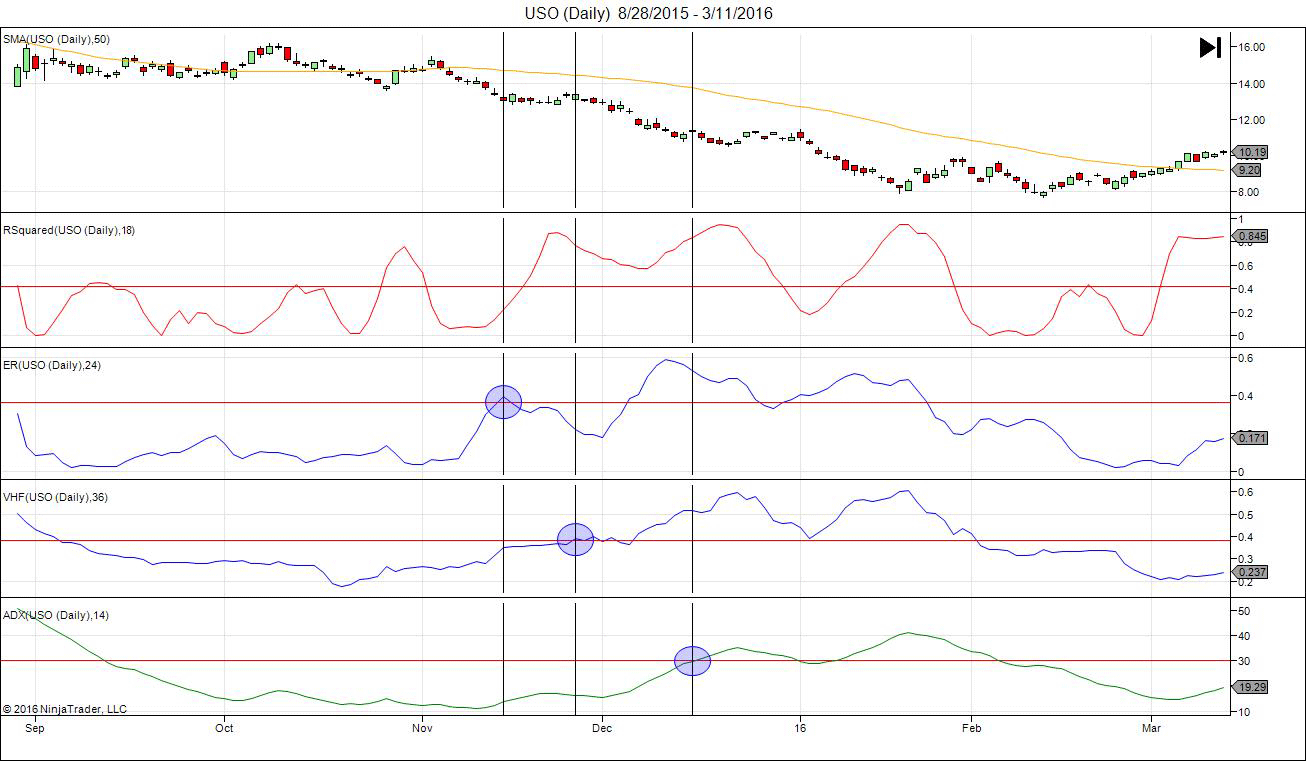
FIGURE 6: NINJATRADER. The R-squared, ER, VHF, and ADX
are shown detecting the downtrend in USO beginning with the ER indicator
on November 13, 2015.
—Raymond Deux & Zachary Gauld
NinjaTrader, LLC
www.ninjatrader.com
BACK TO LIST

UPDATA: OCTOBER 2016
Our Traders’ Tip for this month is based on the article by Mark Katsanos
in this issue, “Which Trend Indicator Wins?” In it, the author
compares four trend-following indicators to determine which is best for finding
trends in real time, as opposed to in retrospect. The four indicators are:
the ADX, Kaufman’s efficiency ratio, R-squared, and the vertical horizontal
filter, each with standardized entry rules. A sample chart of the indicators
is shown in Figure 7.
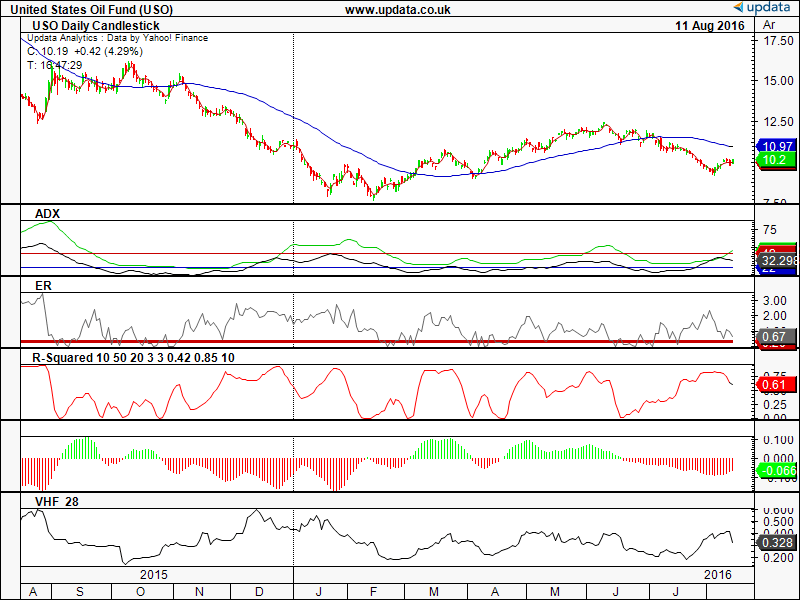
FIGURE 7: UPDATA. This chart demonstrates the ADX, VHF,
R-SQ, and ER applied to the ETF USO in daily resolution.
The Updata code for this article can be found in the Updata library and may
be downloaded by clicking the custom menu and system library.
Those who cannot access the library due to a firewall may ask our helpdesk
for a copy, or copy and paste the code shown below.
'ADX
PARAMETER "ADX Period" #PERIOD=14
PARAMETER "Trend" @TREND=30
PARAMETER "Lag" #LAG=12
PARAMETER "ADX Max" @ADXMAX=42
PARAMETER "Critical" @CRIT=22
PARAMETER "Mult" @MULT=1.8
PARAMETER "Avg" #AVGPER=50
DISPLAYSTYLE 5LINES
INDICATORTYPE TOOL
INDICATORTYPE2 CHART
COLOUR RGB(0,0,200)
COLOUR2 RGB(0,0,0)
COLOUR3 RGB(200,0,0)
COLOUR4 RGB(0,0,200)
COLOUR5 RGB(0,200,0)
NAME "" ""
NAME2 "ADX" ""
@ADX=0
@AVG=0
FOR #CURDATE=#AVGPER TO #LASTDATE
@ADX=DIRMOV(#PERIOD,ADX)
@AVG=MAVE(#AVGPER)
'EXIT
IF ORDERISOPEN=1 AND CLOSE<@AVG
SELL CLOSE
ELSEIF ORDERISOPEN=-1 AND CLOSE>@AVG
COVER CLOSE
ENDIF
'LONG
IF @ADX>@TREND AND @ADX<@ADXMAX AND CLOSE>@AVG
BUY CLOSE
ENDIF
IF @ADX>@MULT*PLOW(@ADX,#LAG) AND @ADX>@CRIT AND CLOSE>@AVG
BUY CLOSE
ENDIF
'SHORT
IF @ADX>@TREND AND @ADX<@ADXMAX AND CLOSE<@AVG
SHORT CLOSE
ENDIF
IF @ADX>@MULT*PLOW(@ADX,#LAG) AND @ADX>@CRIT AND CLOSE<@AVG
SHORT CLOSE
ENDIF
@PLOT=@AVG
@PLOT2=@ADX
@PLOT3=@ADXMAX
@PLOT4=@CRIT
@PLOT5=@MULT*PLOW(@ADX,#LAG)
NEXT
'KAUFMAN EFFICIENCY RATIO SYSTEM
PARAMETER "Period" #PERIOD=20
PARAMETER "Smooth" #SMOOTH=3
PARAMETER "Mult" @MULT=2.5
PARAMETER "Lag" #LAG=3
PARAMETER "Max" @MAX=0.42
PARAMETER "Critical" @CRIT=0.26
PARAMETER "Trend" @TREND=0.36
DISPLAYSTYLE 5LINES
INDICATORTYPE TOOL
INDICATORTYPE2 CHART
COLOUR RGB(200,0,0)
COLOUR2 RGB(100,100,100)
COLOUR3 RGB(200,0,0)
COLOUR4 RGB(200,0,0)
COLOUR5 RGB(200,0,0)
@ER=0
@SIGNAL=0
@DIFF=0
@NOISE=0
NAME "" ""
NAME2 "ER" ""
FOR #CURDATE=#PERIOD TO #LASTDATE
@DIFF=CLOSE-CLOSE(1)
@SIGNAL=ABS(CLOSE-CLOSE(#PERIOD))
@NOISE=SGNL(ABS(@DIFF),#PERIOD,M)*#PERIOD
@ER=SGNL(@SIGNAL/@NOISE,#SMOOTH,M)
'EXITS
IF ORDERISOPEN>0 AND CLOSE<MAVE(#SMOOTH)
SELL CLOSE
ELSEIF ORDERISOPEN<0 AND CLOSE>MAVE(#SMOOTH)
COVER CLOSE
ENDIF
'LONG
IF @ER>@TREND AND @ER<@MAX AND @ER>HIST(@ER,#LAG) AND CLOSE>MAVE(#SMOOTH)
BUY CLOSE
ELSEIF @ER>@MULT*PLOW(@ER,#LAG) AND @ER>@CRIT AND CLOSE>MAVE(#SMOOTH)
BUY CLOSE
ENDIF
'SHORT
IF @ER>@TREND AND @ER<@MAX AND @ER>HIST(@ER,#LAG) AND CLOSE<MAVE(#SMOOTH)
SHORT CLOSE
ELSEIF @ER>@MULT*PLOW(@ER,#LAG) AND @ER>@CRIT AND CLOSE<MAVE(#SMOOTH)
SHORT CLOSE
ENDIF
@PLOT=MAVE(#SMOOTH)
@PLOT2=@ER
@PLOT3=@CRIT
@PLOT4=@MAX
@PLOT5=@TREND
NEXT
NAME R-Squared
PARAMETER "Critical" @LCrit=10
PARAMETER "Close Avg" #AVGPER=50
PARAMETER "RSQ Period" #FPeriod=20
PARAMETER "RSQ MA LENGTH" #LENGTH=3
PARAMETER "Smooth" #SMOOTH=3
PARAMETER "Trend" @TREND=0.42
PARAMETER "R2 Max" @R2MAX=0.85
PARAMETER "Lag" #LAG=10
DISPLAYSTYLE 4LINES
PLOTSTYLE LINE RGB(255,0,0)
PLOTSTYLE2 HISTOGRAM
PLOTSTYLE3 LINE RGB(0,0,255)
PLOTSTYLE4 LINE RGB(255,0,0)
INDICATORTYPE CHART NEWWINDOW
INDICATORTYPE2 CHART NEWWINDOW
INDICATORTYPE3 CHART NEWWINDOW
INDICATORTYPE4 CHART SUPERIMPOSERIGHT
@sumxy=0
@sumx=0
@sumy=0
@sumXsq=0
#I=0
@b=0
@SLOPE=0
@sumYsq=0
@RSQ=0
@TOP=0
@Bottom1=0
@Bottom2=0
#RSQPeriod=#FPeriod
FOR #CURDATE=#FPeriod To #LASTDATE
@sumxy=0
@sumx=0
@sumy=0
@sumXsq=0
@sumYsq=0
For #I=(#FPeriod) To 1 STEP -1
@sumxy=@sumxy+(#I*CLOSE(#I))
@sumy=@sumy+close(#I)
@sumx=@sumx+(#I)
@sumXsq=@sumXsq+EXPBASE(#I,2)
@sumYsq=@sumYsq+EXPBASE(CLOSE(#I),2)
Next
'Calculates SLOPE
@SLOPE=((@sumx*@sumy)-(@sumxy*#FPeriod) )/ ((@sumXsq*#FPeriod)-(EXPBASE(@sumx,2)) )
@PLOT2=@SLOPE
'Calculates RSQ-arranged so as to keep track of brackets
@TOP=( (#RSQPeriod*@sumxy)-(@sumx*@sumy) )
@Bottom1=#RSQPeriod*@sumYsq-EXPBASE(@sumy,2)
@Bottom2=#RSQPeriod*@sumXsq-EXPBASE(@sumx,2)
@RSQ=EXPbase(@TOP/EXPBASE((@Bottom1*@Bottom2),0.5),2)
@PLOT=@RSQ
'EXIT
IF ORDERISOPEN=1 AND CLOSE>MAVE(#AVGPER)
SELL CLOSE
ENDIF
'EXIT
IF ORDERISOPEN=-1 AND CLOSE<MAVE(#AVGPER)
COVER CLOSE
ENDIF
'ENTRIES
IF @RSQ>@TREND AND @RSQ<@R2MAX AND @RSQ>HIST(@RSQ,#LAG)
'LONG
IF CLOSE>MAVE(#AVGPER) AND @SLOPE>@LCrit
BUY CLOSE
ENDIF
'SHORTS
IF CLOSE<MAVE(#AVGPER) AND @SLOPE<@LCrit
SHORT CLOSE
ENDIF
ENDIF
NEXT
'VERTICAL HORIZONTAL FILTER
PARAMETER "Period" #PERIOD=28
PARAMETER "Smooth" #SMOOTH=50
PARAMETER "Trend" @TREND=0.38
PARAMETER "Mult" @MULT=1.5
PARAMETER "Crit" @CRIT=0.24
PARAMETER "Max" @MAX=0.42
PARAMETER "Lag" #LAG=10
NAME "VHF " #PERIOD ""
@VHF=0
FOR #CURDATE=#PERIOD TO #LASTDATE
@VHF=(PHIGH(CLOSE,#PERIOD)-PLOW(CLOSE,#PERIOD))/(SGNL(ABS(CLOSE-CLOSE(1)),#PERIOD,M)*#PERIOD)
'EXITS
IF CLOSE<MAVE(#SMOOTH) AND ORDERISOPEN=1
SELL CLOSE
ELSEIF CLOSE>MAVE(#SMOOTH) AND ORDERISOPEN=-1
COVER CLOSE
ENDIF
'LONGS
IF @VHF>@TREND AND @VHF<@MAX AND @VHF>HIST(@VHF,#LAG)
IF CLOSE>MAVE(#SMOOTH)
BUY CLOSE
ENDIF
ENDIF
IF @VHF>@MULT*PLOW(@VHF,#LAG) AND @VHF>@CRIT AND CLOSE>MAVE(#PERIOD)
BUY CLOSE
ENDIF
'SHORTS
IF @VHF>@TREND AND @VHF<@MAX AND @VHF>HIST(@VHF,#LAG)
IF CLOSE<MAVE(#SMOOTH)
SHORT CLOSE
ENDIF
ENDIF
IF @VHF>@MULT*PLOW(@VHF,#LAG) AND @VHF>@CRIT AND CLOSE<MAVE(#PERIOD)
SHORT CLOSE
ENDIF
@PLOT=@VHF
NEXT
—Updata support team
support@updata.co.uk
www.updata.co.uk
BACK TO LIST
MICROSOFT EXCEL: OCTOBER 2016
In “Which Trend Indicator Wins?” in this issue, author Markos
Katsanos explores four indicators that were designed by their respective developers
to assist the user in differentiating between trending markets and consolidating
markets. Once the type of market has been determined, one can then apply trend-following
indicators or oscillators, as appropriate, when making trading decisions.
As a way to compare these indicators, Katsanos designed a separate, simple
trading system around each of the four indicators. In Figure 8 we have the
basic controls for the simple moving average (on the price chart) and the four
trend indicators, which are plotted as subcharts below the price chart.
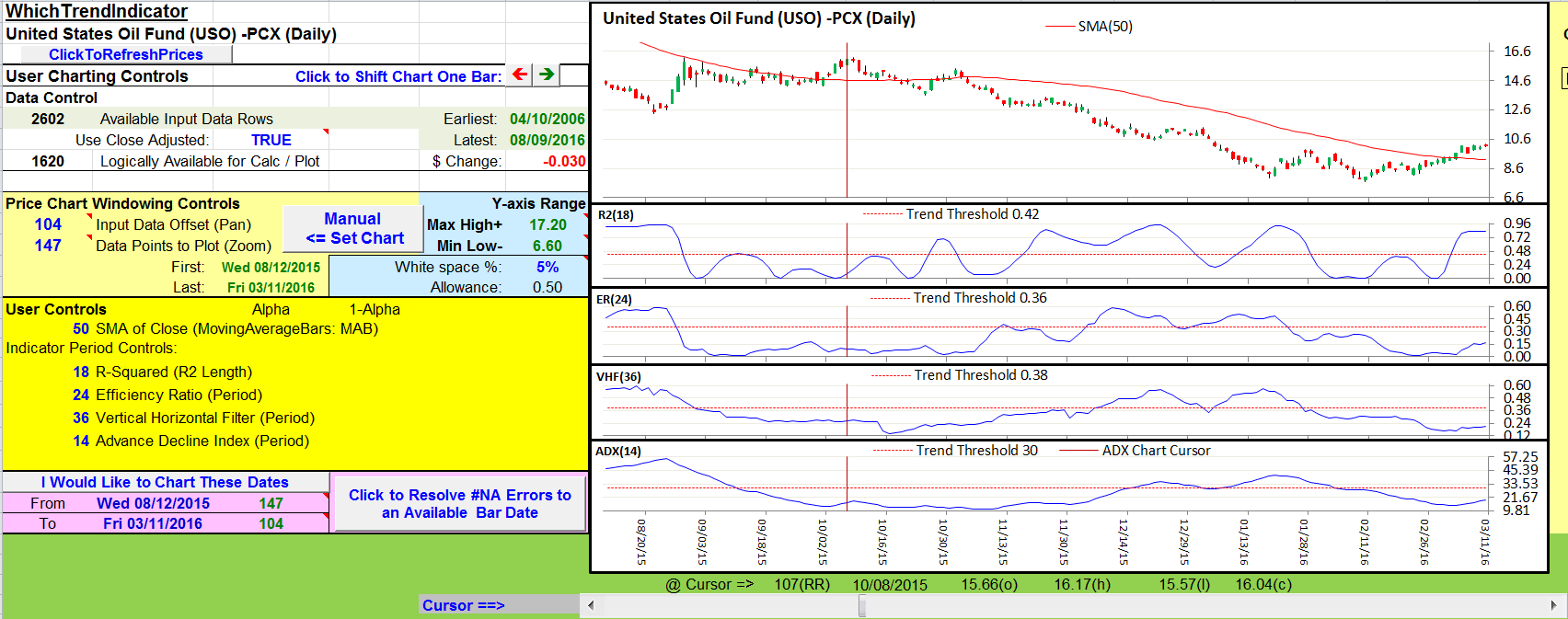
FIGURE 8: EXCEL, INDICATOR COMPARISON. This chart approximates
Figure 3 from Katsanos’ article in this issue, “Which Trend Indicator
Wins?”
The four individual trading systems each require a fair number of columns
of formulas. All four indicators done on a single worksheet would make for
a very busy worksheet. Thus, this spreadsheet has a separate worksheet for
each of the four indicators.
Here is my observation about the trading simulations:
- As documented in the code that is given by the author in the sidebar to
the article, each and every trade assumes that the entire $50,000 (AMT) is
available for that trade. No provision has been made in this code to recognize
the effects that a running balance would have on subsequent trade sizes.
For the purposes of the study, we can argue that this keeps things “apples
to apples.”
- In this Traders’ Tips workbook I have gone for a “how would
I fare using this” feeling by simulating the running total and the
effect it should have on trade sizes. But I have made no provisions for slippage,
commissions, or risk management.
While developing this workbook, I encountered a couple of interesting artifacts:
- The code might generate a long or short entry signal while a trade of the
other persuasion was already in progress. Thus, to simplify things a bit,
I have set up the trading simulation as two separate accounts, one for long
trades and one for short trades.
- The second artifact is that the simulation may generate additional long
or short entry signals while a trade of that persuasion is already in progress.
Here, my approach differs:
- Katsanos’ code will honor each of these as individual trade entries,
risking an additional 50,000. The aggregate dollar figures involved can
be impressive!
“Sell all” and “BuyToCover all” statements
in his code will close out these single to possibly multiple positions
on the first available exit signal.
- Since my approach is “how would my account fare?” and I
am going “all in” on the first signal, logically, there is
nothing left in the account to take any advantage of any secondary entries.
So the logic in this workbook will only recognize the first entry
signal of a given persuasion for a transaction until the transaction
exits. At most, my simulation will have one trade of each persuasion
active at a time.
Figure 9 shows part of one of my trend indicator worksheets. Each of the four
trend indicator worksheets has the same layout, as follows:
Across the top:
- A controls area that includes:
- A section for values carried from the CalculationsAndCharts tab
- Under that, a section for the user-specified values that control the
trading simulation
- A summary block for the long and the short trading simulation accounts
- A block used to control the range and step size of the vertical axis (y-axis)
when this trend indicator is charted.
Across the bottom:
- Columns for the pricing data, then
- Calculations for the indicator. The result of the calculations are used
in the trading logic and the corresponding subgraph on the CalculationsAndCharts
tab.
- As we scroll to the right, you see:
- What I called the “signal factory,” which is an area where
I calculate intermediate results for tests that get used in multiple
columns of the trading simulation decision logic. This area saves a lot
of typing and helps to avoid the “finger faults” inherent
in trying to type the same stuff in multiple columns of the simulations.
- To the right of the signal factory there is a group of columns that
simulate the long trades and then a group of columns that simulate the
short trades.
- Finally, at the far right is a block that controls the cursor for the
corresponding subgraph.
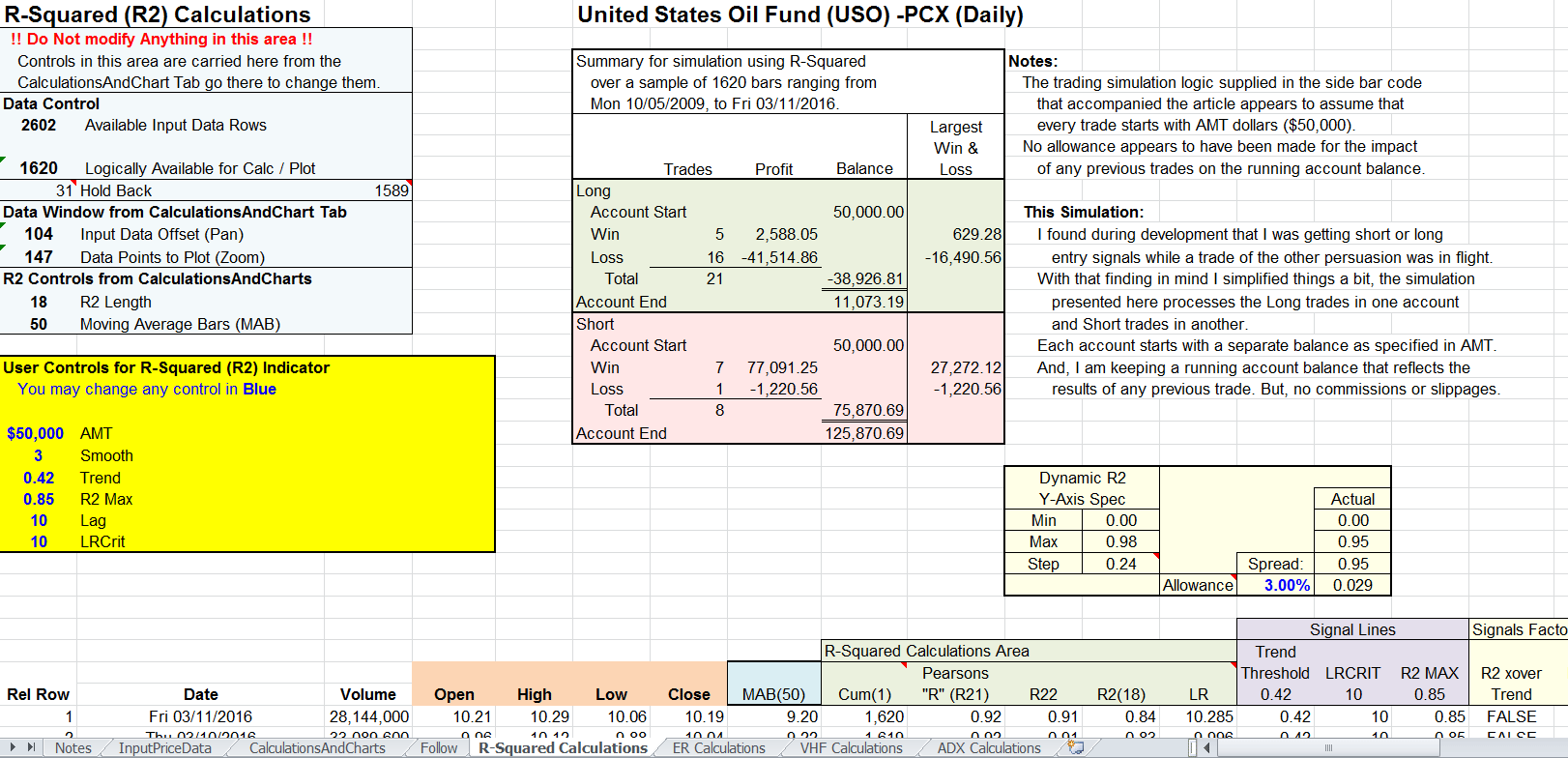
FIGURE 9: EXCEL, INDICATOR CALCULATION. Here is a worksheet
that can be used for indicator calculation and trading simulation.
The spreadsheet file for this Traders’ Tip can be downloaded here. To successfully download it, follow these
steps:
- Right-click on the Excel
file link, then
- Select “save as” (or “save target as”) to place
a copy of the spreadsheet file on your hard drive.
—Ron McAllister
Excel and VBA programmer
rpmac_xltt@sprynet.com
BACK TO LIST
Originally published in the October 2016 issue of
Technical Analysis of STOCKS & COMMODITIES magazine.
All rights reserved. © Copyright 2016, Technical Analysis, Inc.

















